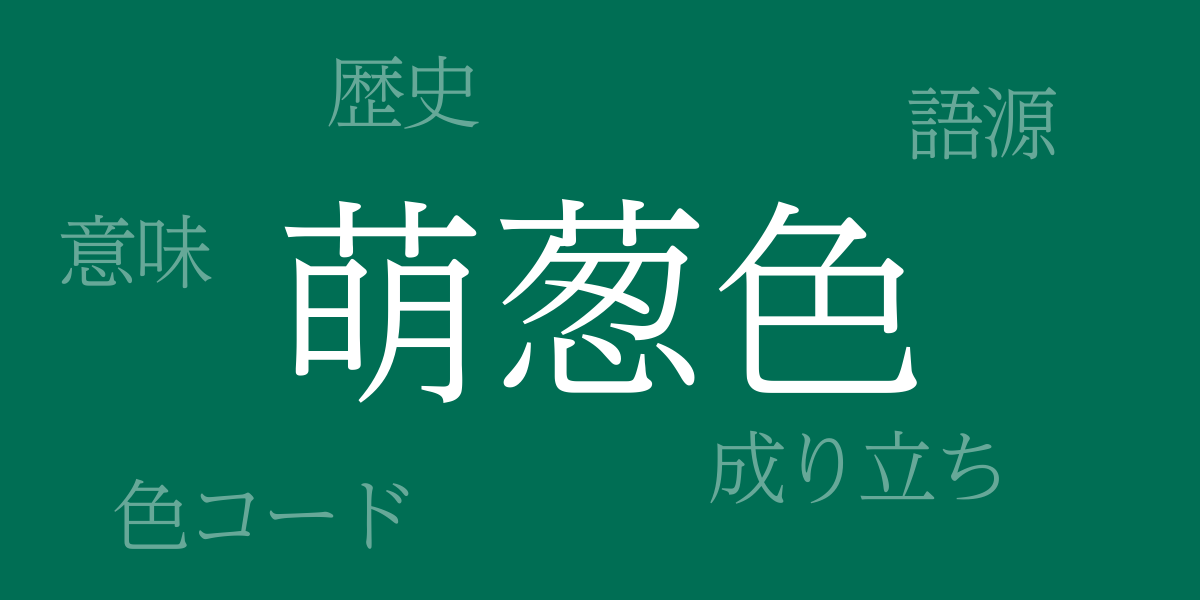A refreshing color reminiscent of the gentle spring breeze—Moe-gi-iro (もえぎいろ). This color holds a unique charm that evokes Japan’s nature, captivating the hearts of Japanese people throughout its long history. This article delves into the deep history and beauty of Moe-gi-iro, exploring its meaning, usage, and role in modern design.
About Moe-gi-iro (もえぎいろ)
Moe-gi-iro (もえぎいろ) is a shade of green that evokes the vitality of new sprouts. Inspired by the plants of nature, it features a distinctive hue of green with a slight hint of blue. As a traditional Japanese color, Moe-gi-iro has adorned clothing and crafts since ancient times, enriching Japan’s traditional beauty as a symbol of the changing seasons.
History of Moe-gi-iro
The history of Moe-gi-iro dates back to ancient times, reaching as far as the Nara period. By the Heian period, it was used in the attire of nobles, particularly favored for samurai armor and horse gear. Over time, Moe-gi-iro played a significant role in various cultural expressions such as Japanese painting and dyeing.
Color Codes for Moe-gi-iro
In the field of digital and web design, precise color reproduction is essential. The color codes for expressing Moe-gi-iro are as follows:
- HEX: #006E54
- RGB: R:0 G:110 B:84
- CMYK: C:87 M:48 Y:77 K:8
Western Name for Moe-gi-iro
In the West, Moe-gi-iro is also referred to as “Japanese Green.” As a color unique to Japan, it holds a special recognition abroad, establishing its position as a symbol of Japanese culture. Its name is used in various fields like fashion and interior design.
Summary of Moe-gi-iro
Moe-gi-iro holds an important position as a traditional Japanese color, thanks to its beauty and historical background. Even in modern times, it is widely used in the worlds of design and art, playing a role in conveying Japan’s nature and culture to the world. Incorporating this color adds depth and a sense of harmony to artworks and products.

























